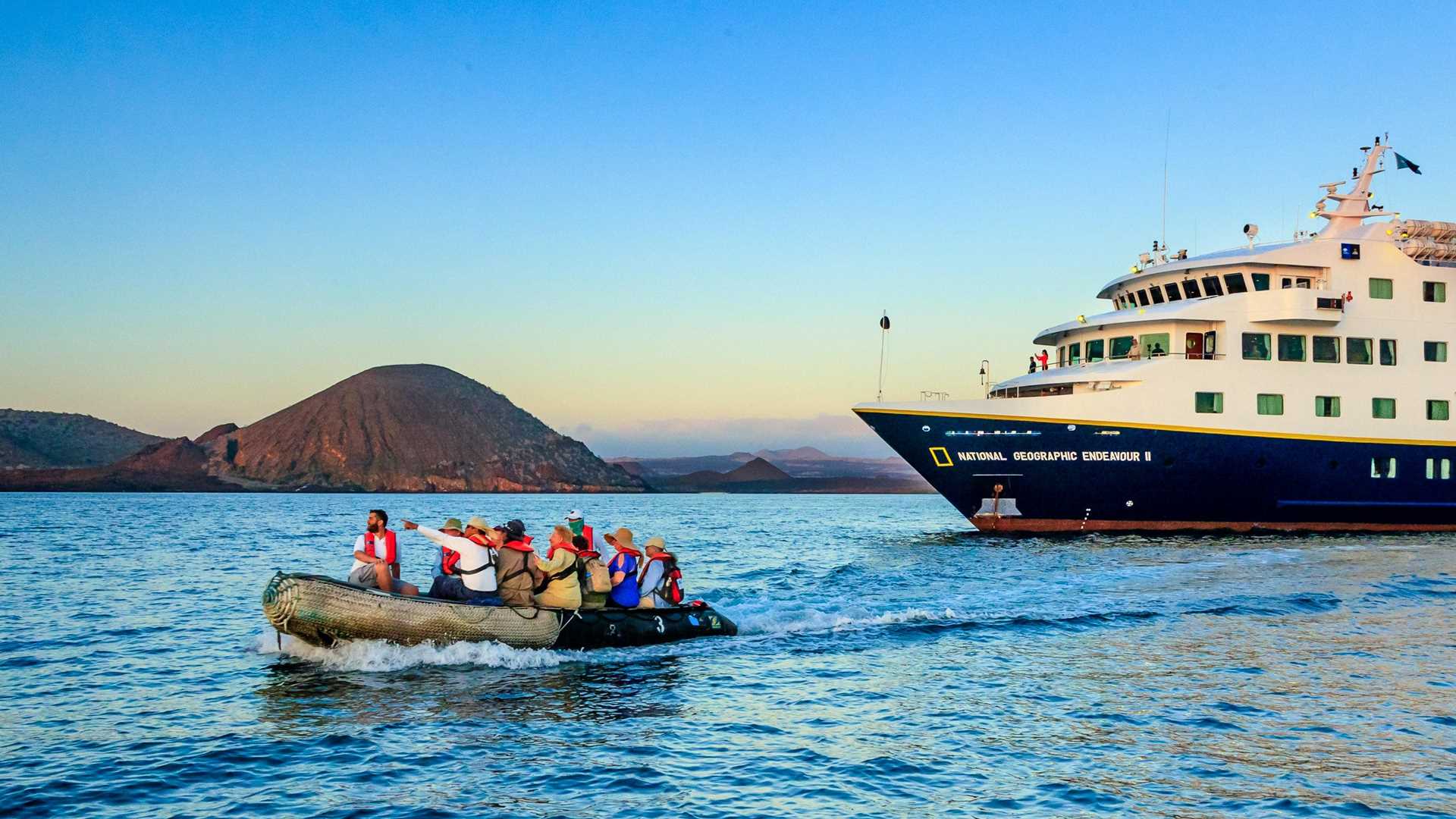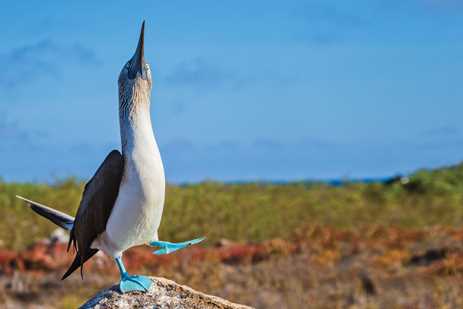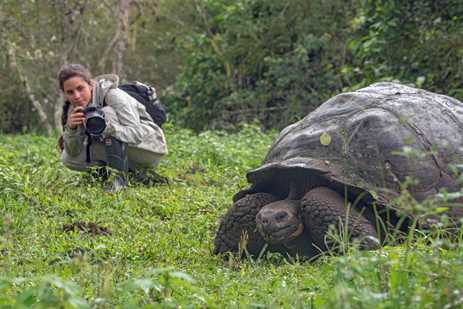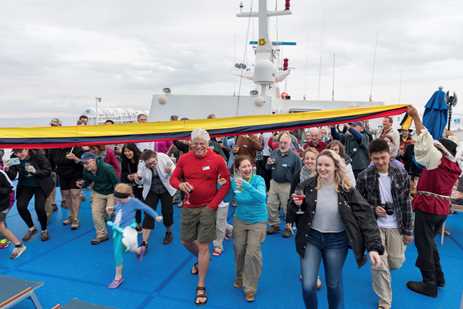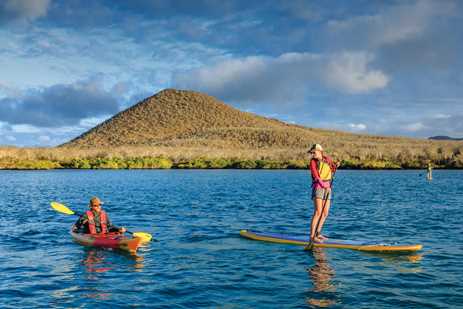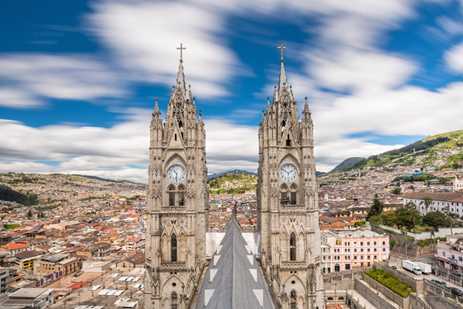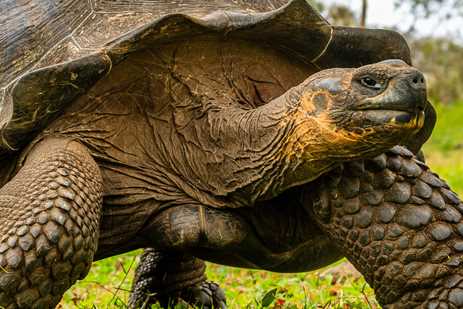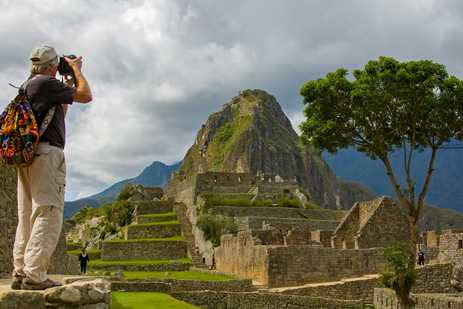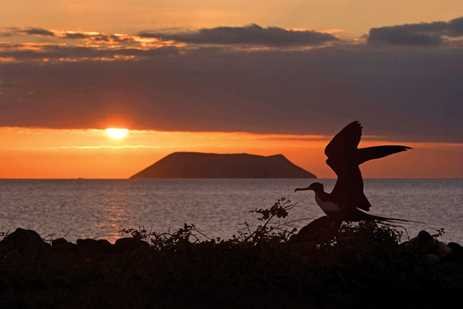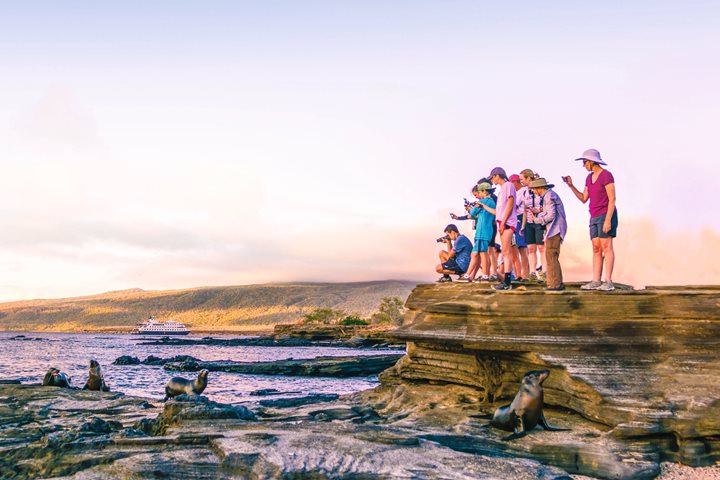The Galápagos Islands abound with activities for travelers who seek adventure in this remote archipelago, where 97% of the land is preserved in a natural park. Covering approximately 3,087 square miles—in terrain alone, not water in between—the islands are only accessible in the company of a licensed naturalist, ensuring that you will enjoy an expert perspective of the fascinating environment around you.
The small-ship Galápagos voyages offered by National Geographic-Lindblad Expeditions are born from relationships built and knowledge gained over 50+ years of exploration in these legendary islands. When you travel aboard the fleet, your veteran expedition team which is made up of locals from Galápagos or from mainland Ecuador will help reveal the best-kept secrets of this world-renowned destination.
One of the most incredible things about Galápagos is that it is magical all year-round. The majority of animals are active throughout the whole year, so whenever you visit you are sure to encounter a wide range of wildlife, from giant tortoises and Galápagos penguins to marine iguanas and blue-footed boobies. Most travelers come to see these iconic creatures but there are myriad other sights and activities here that will make your voyage unforgettable. Here are top 10 things to do and see on your next Galápagos expedition.

